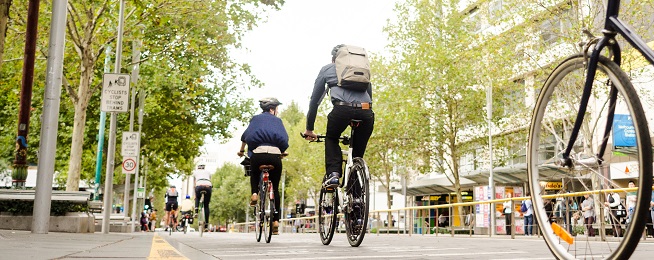A radical re-think into the way we organise cities and urban settlement will be needed to protect human health from the impacts of climate change, a new review has found.
We are facing a tsunami of non-communicable diseases (NCDs), especially cardiovascular disease, that will be intensified by environmental risk exposures, the review says.
Transport interventions, such as increasing the rate of active travel, will be essential if the future trends are to be arrested.
The review was authored by a group of leading international researchers in the field of urban and planetary health, and published by the European Society of Cardiology.
"In addition to urbanization and rapid population growth, cities in the 21st century are confronting unparalleled challenges, including traffic congestion, air and noise pollution, climate change, lack of green space, heat islands, growing social inequity, and rising chronic disease,” the authors report.
"Hence, their future success will be shaped by decisions about how to accommodate the needs of growing urban populations.
"Transitioning to cities that promote local living and active and sustainable mobility is increasingly recognized as providing co-benefits for health and the environment by creating more sustainable and liveable cities.
"There is now a vast body of evidence showing that city planning decisions affect multiple NCD pathways, not least of which is via increased physical activity through active transportation.
"A growing body of longitudinal evidence shows that urban sprawl and low walk- ability negatively affects cardiometabolic risk factors, while exposure to green space has been shown to lower all-cause mortality.”
The review makes reference to the Ds of transport and urban planning:
- density
- design
- diversity of land use
- distance to transit
- destination accessibility
- demand management
- distribution of employment
- desirability of safety and desirability of attractive travel routes.
"Building cities for cars and planning low density urban sprawl housing developments increases car use, traffic, traffic congestion, air pollution, and noise, which in turn increases stress, road trauma, physical inactivity, and prolonged sitting, leading to increased morbidity and premature mortality,” the authors say
"Conversely, building more compact cities with high-quality public transport, bike-sharing systems, safe separated cycling infrastructure, and creating safe, convivial walkable neighbourhoods will provide access to local destinations and pedestrian infrastructure.
"This will not only increase bicycle use and walking, physical activity, as well as social contacts but also reduce air pollution, noise, stress, and road trauma, leading to decreased morbidity and premature mortality."
Become our friend
Find out more about Bicycle Network and support us in making it easier for people to ride bikes.


